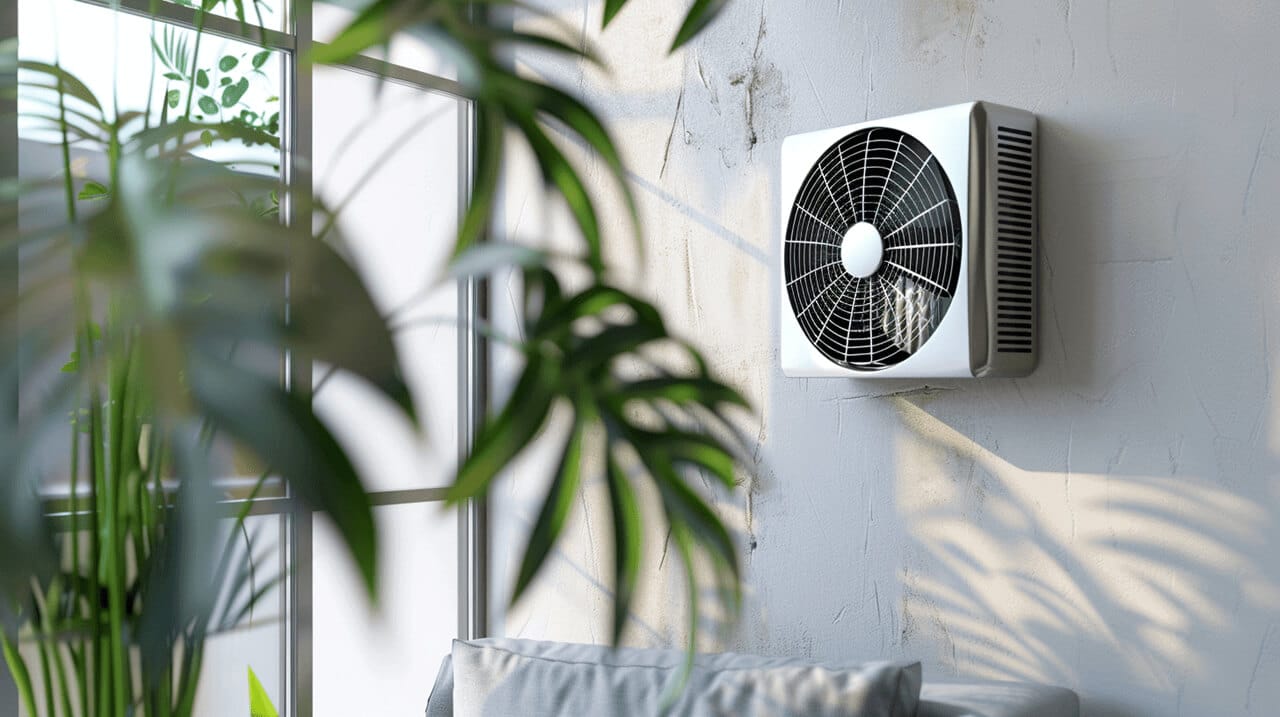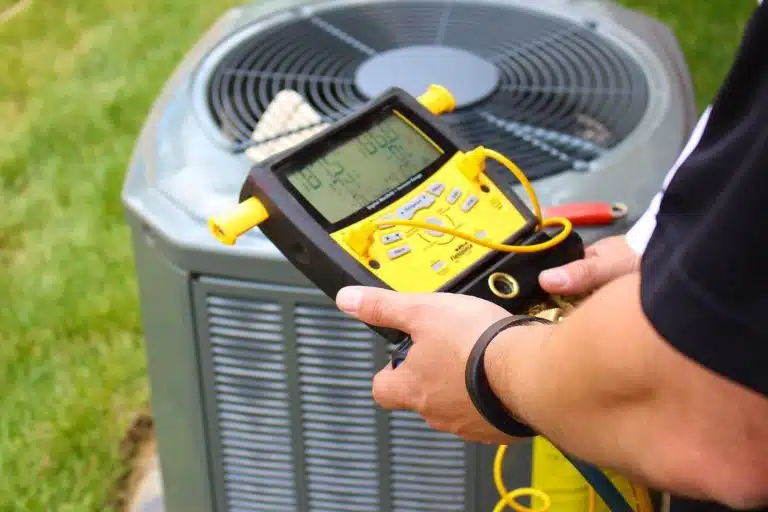Attic fans are an essential component of a well-ventilated home. They regulate the temperature in your attic space, preventing damage to the roof and reducing the workload on your air conditioning unit. This article will explore how attic fans work, their purposes and benefits, and how they compare to a whole-house fan. We will conclude with some tips on installing an attic fan in your home, the benefits of attic fans, and understanding how attic fans work.
What Is an Attic Fan and How Does It Work?
First, let’s understand what does an attic fan do. An attic fan is a ventilation fan. The purpose of attic fan is to regulate the temperature in your attic space by extracting hot air and replacing it with cooler outdoor air. Attic fans are typically installed on the gable vent or roof and can be powered by solar energy, electricity, or wind.
To answer the question of how does an attic fan work, they operate on the simple principle of negative pressure. So, what do attic fans do? And do attic fans really work? They create a vacuum effect that draws in cool air from the outside while expelling hot air from the attic. Now that you know what is attic fan, you should understand there are two varieties of attic fans: mechanical and natural.
Mechanical Attic Fans
Many wonder does an attic fan help. Mechanical attic fans run on electricity and help regulate the temperature and humidity levels in the attic. They are also equipped with a thermostat or humidistat, which automatically turns the fan on and off depending on the preset temperature or humidity levels.
Using a thermostat or humidistat helps maintain an optimal attic environment, preventing heat and moisture buildup that can lead to mold, mildew, and damage to the attic structure. If you’re wondering, do attic fans make a difference – yes, they do!
Natural Attic Fans
Natural attic fans rely on wind power to ventilate the attic space and don’t require electricity to operate. They’re designed to harness the natural airflow and pressure differentials caused by wind movement, drawing air out of the attic and bringing in fresh air from the outside.
Since they’re dependent on wind, natural attic fans may not be as reliable as their mechanical counterparts. If there is no wind, the ventilation process may be compromised, leading to inadequate air circulation in the attic.
Attic Fans Benefits and Drawbacks
Pros
- Improved energy efficiency. One of the attic fan benefits is it helps to regulate the temperature in the attic, reducing the load on your air conditioning unit. This, in turn, can lead to lower energy bills as your HVAC system consumes less electricity to keep your home cool. This answers the question, do attic fans help?
- Prevention of ice damming. Ice damming can be a serious problem during the winter months, causing damage to your roof and other areas of your home. The attic fan purpose is to help circulate air in your attic space, preventing the buildup of heat that can cause ice damming.
- More comfortable living space. Since attic fans regulate the temperature in your attic, they can also help improve your home’s overall comfort level. By preventing heat buildup in the attic, your HVAC system can work more efficiently to maintain a comfortable indoor temperature. This is why you must understand how to use attic fan in summer and consider installing or replacing your AC unit to make both systems work in tandem.
Cons
- Ineffectiveness during extremely hot weather. Attic fans work best when the outside temperature is cooler than the temperature inside your attic. However, during extremely hot weather, an attic fan may not be able to effectively regulate the temperature in your attic. In this case, you may want to consider opting for some attic insulation services.
- Negative pressure in the attic. Attic fans can create negative pressure in your attic, which can cause conditioned air from your home to be drawn up into the attic space. This can reduce the effectiveness of your air conditioning unit and lead to higher energy bills.
- Not a replacement for HVAC unit. While attic fans offer several benefits, they should be used as a supplemental addition to your HVAC system, not a replacement. Attic fans are not a substitute for malfunctioning air conditioning unit, and relying solely on an attic fan to cool your home can lead to discomfort and higher energy bills.

Attic Fans vs. Whole House Fans: What’s the Difference?
It’s important to consider the size of your home and your personal preferences. If you only want to cool certain parts of your home, an attic fan may be sufficient. However, a whole-house fan may be the better choice if you want to cool your entire home and improve the overall air quality.
Another factor to consider is noise. Attic fans are typically quieter than whole-house fans, so if noise is a concern for you, an attic fan may be the way to go. Whole-house fans can be quite noisy, so it’s important to take this into consideration when choosing a fan for your home.
Lastly, it’s important to consult with an expert to determine which type of fan will work best for your specific home and needs. A professional can assess your home’s size, ventilation, and other factors to determine which type of fan will provide the most efficient and effective cooling and improve air quality within your home.
Installing an Attic Fan – Quick Guide
Determine the size of the fan
The size of the fan you need will depend on the size of your attic and the climate in your area. Attic fans are rated in terms of CFM (cubic feet per minute) and the amount of air they can move. The general rule of thumb is to choose a fan that can move a minimum of 1 CFM per square foot of attic space. However, this can vary based on factors like climate and insulation.
Choose the type of fan
As seen above, you get mechanical and natural attic fans. Mechanical fans are typically more expensive but offer more control over the fan’s operation. They are powered by electricity and come with a thermostat or humidistat to control the fan’s operation. Natural fans, on the other hand, are cheaper but less reliable since they only work when wind is present. They do not require electricity to operate.
Decide on the location and power source of the fan
The best location for the fan will depend on your attic’s layout and design. Some common locations include the gable end, roof peak, or soffit vent. Make sure to choose a location that allows for proper airflow and ventilation. Attic fans are typically powered by electricity and may require an electrician to install an electrical outlet in the attic space.
Install the fan
Installing an attic fan can be a DIY project but may require the assistance of a contractor or electrician. Some basic steps involved in installing an attic fan include:
- Cutting a hole in the roof or soffit for the fan.
- Mounting the fan and securing it in place.
- Running electrical wiring to power the fan.
- Installing a thermostat or humidistat to control the fan’s operation.
Bring Home the Benefits of an Attic Fan
So, are attic fans worth it? Attic fans are essential to a well-ventilated home and provide several benefits to homeowners. You need to learn how to use an attic fan for improved energy efficiency, reduced energy bills, and increased comfort in your living space.
While many still wonder what are attic fans for, they are still a valuable addition to your HVAC system. Understanding the workings of attic fans and comparing them to whole house fans can help answer the question, does attic fan help cool house? If you’re convinced about the benefits of an attic fan and are interested in installing one, contact us today and get a free quote!
Bibliography
-
Attic Ventilation Fans: Pros and Cons – Energy Texas. (n.d.). Www.energytexas.com. Retrieved July 19, 2024, from https://www.energytexas.com/get-to-learnin/attic-ventilation-fans-pros-and-cons-will-they-save-electricity
-
Strudler, S. (2022, February 10). Do Attic Ventilation Fans Really Work? | Constellation. Constellation Residential and Small Business Blog.
https://blog.constellation.com/2022/02/10/attic-ventilation-fans-faq/ -
“Attic Ventilation Fans | Building America Solution Center.” Building America Solution Center, 21 September 2022, https://basc.pnnl.gov/information/attic-ventilation-fans.
Accessed 22 July 2024.







